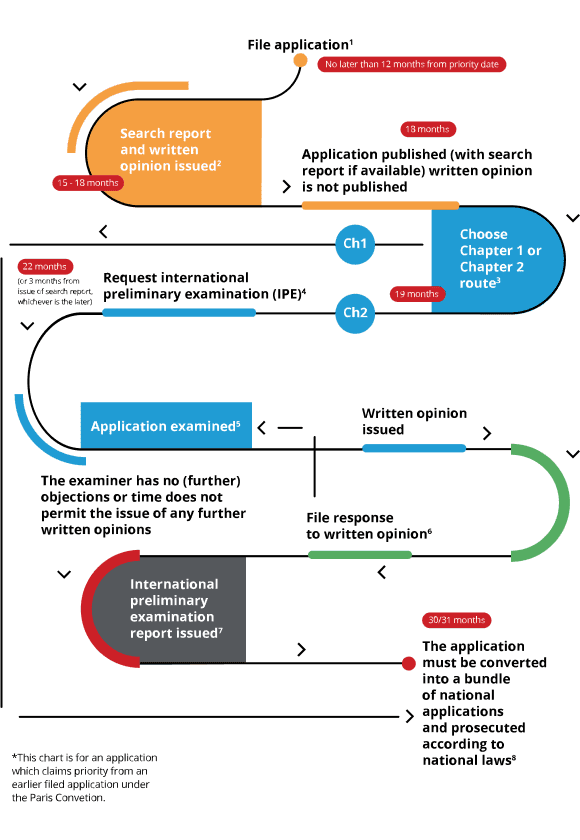The documents/information/ instructions required by us to prepare an international patent application are as follows:
- The full name, address and nationality/state of incorporation of each applicant and each inventor. The address of each inventor can be that of the applicant.
- An English language Patent specification consisting of description, claims, abstract and drawings (if any). Drawings can be filed informally at first, but formal drawings must be filed shortly afterwards.
- If priority is to be claimed for the international application, the country, date of filing and application number of the priority application are required. The International application must be filed within 12 months from the date of the first filing.
- If priority is claimed, a certified copy of the priority application may be needed although increasingly it is possible to request that the relevant documents be transferred electronically from the Office of First Filing to the PCT Receiving Office. It may also be necessary to file a translation of the priority application but this is dealt with on a country-by-country basis at a later date.
- Filing, transmittance and search fees are required within one month from filing an international patent application. However, we will pay these fees at the time of filing unless we receive your specific instructions to the contrary.
No forms need to be signed by the applicant
The prosecution stages of an international (PCT) patent application (claiming priority*)

*Approximate time scale (from priority date)
Notes
- The application should include a full specification with claims, drawings and abstract. All countries which belong to the Patent Co-operation Treaty will automatically be designated.
- It is not necessary to respond to the International Searching Authority’s prior art search, but it may be beneficial to do so if relevant prior art is cited.
- If Chapter I route chosen, the written opinion issued with the international search report will be converted by the International Bureau into an International Preliminary Report on Patentability (Chapter I PTC).
- If IPE is requested, the applicant should submit a written reply to the written opinion issued with the search report together, where appropriate, with amendments.
- If the EPO is the International Searching Authority and the International Preliminary Examining Authority, the written opinion issued will address the reply and any amendment submitted with the IPE request.
- Filing a response is optional, but advisable if objections are raised in the written opinion. The more objections which are dealt with at this stage, the more positive the international preliminary examination report is likely to be. The EPO can, at its discretion, issue further written opinions.
- No response can be filed to the international preliminary examination report.
- The conversion of the application (i.e. national processing) can be for some or all of the countries of the Patent Co-operation Treaty. The costs of national processing are roughly equivalent to the costs of filing national applications in each country.
Download PDF

